Analyzing a new market may sound like an overwhelming task. However, like many other challenges, it is not too hard to do. Based on best practices and functionalities of the brand new Semrush Market Explorer tool, we have created a comprehensive guide that will help you analyze a new market in three big steps.
Step 1. Industry and Market Overview
Before you step into uncharted territory, there are some things to consider. First and foremost, make sure there is any market at all. Look at businesses like yours to estimate its size and composition, note the most visible trends, and outline the market segments to make your further work easier. Among other things, this information can help you persuade investors that you are aware of the environment you are competing in.
Reveal the Key Players
Companies that have already succeeded in the target niche can become your main informants. So, start by identifying key businesses in the industry. If you can name at least one, Market Explorer will help you expand the list. Type a key player’s domain into the box and look at the Market Relevant Sites section. There you will find the sites Semrush associates with the queried domain.
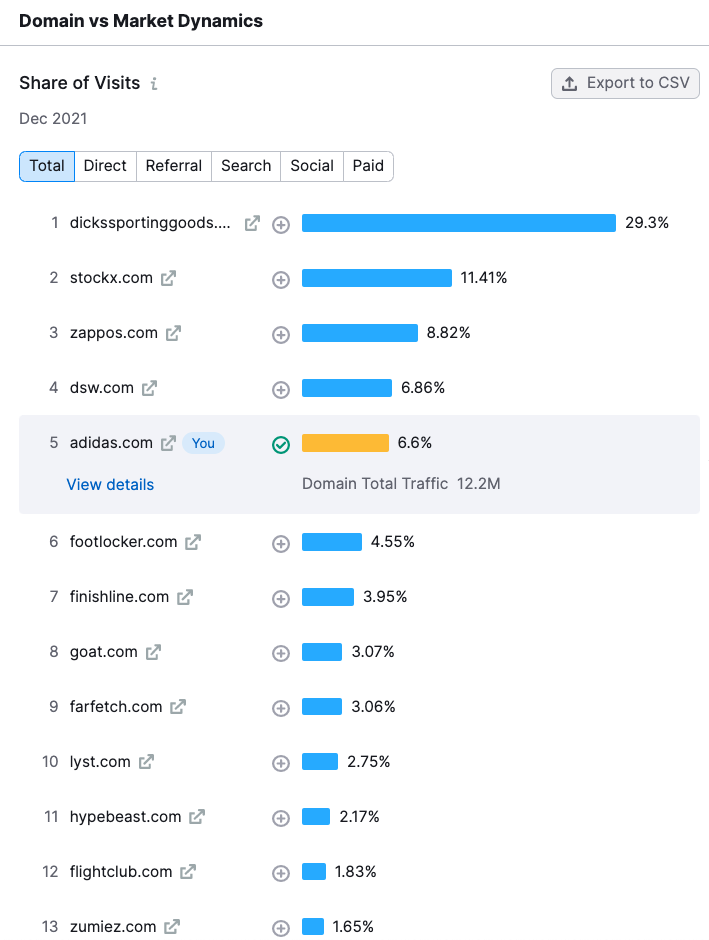
Domains on the top of the list should be of special interest to you. By traffic volume, you can estimate their approximate market shares and make a shortlist of businesses whose strategies you should study closely. For each of these players, you can reveal audience characteristics, traffic sources, and traffic trends — all with the help of the Market Explorer tool.
Detect General Market Growth Dynamics
Hopefully, you have found a market that is perfectly balanced, meaning there is competition, and an empty field at the same time. Now, to decrease future risks, it is important to understand whether your target industry/niche is thriving or falling into decline, how big it currently is, and how quickly it is changing. Here, you can use Market Explorer again — just filter historical data for the market traffic.

Analyze Industry Trends
There are highly volatile industries like hospitality, where seasonal trends strongly impact demand. If the same happens in your niche, you would like to know how these industry dynamics will impact your business. Pick your own or a big rival’s domain and check how well its traffic trend is aligned with the general trend of the market. If the lines you see are parallel, then the business is following the trend. It is not necessarily good or bad — it is simply a fact that you need to consider in further research.
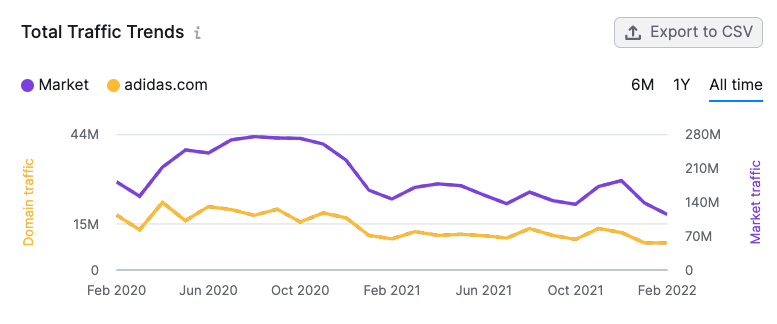
Outline the Product Offer and Business Development Direction
To create an effective business plan, collect more data on the core products/services they are offering, the business models they are using, and the stage of company development. For this, analyze primary sources, such as companies’ official websites and social media profiles, as well as authoritative industry reports and stats.
This information will help you understand the volume of similar goods and services that are sold in your market right now and make predictions. To speed up the process, you can use news aggregators and content analyzers, like Feedly. If you crave business information, such as revenue, investments, and the number of employees, go to platforms like Crunchbase and Craft.
Take Threats Into Account
Next, try to figure out if there is a threat of new entrants or substitute products/services. Remember that at this stage, you are painting the competitive landscape in large strokes, so you don’t have to dive deep into social mentions and press releases. Just find out if there are any easily accessible gaps in the product — if there is one, you can bet that sooner or later a competitor will fill it.
Highlight the Barriers to Entry
There are high chances, though, that your niche will happen to be empty. This can especially be the case if you’re looking at a new geographical market. Ask yourself: why are global players not active in this particular region yet? The answer may lie in political risks, an unstable economy or volatile market situation. Emerging countries may sound like a profitable option sometimes, but consumer habits there may turn out to be too particular. Other barriers to keep in mind include expenses of language localization, online/offline preferences, and restricted payment and delivery solutions.
Now that you are familiar with the market situation from a businesses’ point of view, you can take a closer look at consumers and their needs and interests in detail.
Step 2. Target Audience Analysis
Knowing your buyer persona is one of the key elements of any marketing strategy. You are supposed to have a clear understanding of who, where, when, and how you can reach, and what can be done to maximize the outcome. Market Explorer and Traffic Analytics offer a variety of reports to answer the most important questions related to your target audience.
Measure the Market Size
While the industry size is usually measured in dollars (or any other local currency), the market size counts in the number of potential customers. In the Market Overview report, you can find the overall amount of traffic the specific market is getting and its rate of growth over the past periods. You can use this data for calculating the budget and forecasting the revenue.

Look at the User Demographics and Psychographics
Even if you don’t sell cosmetics or apparel, your customers’ age and gender can make a serious difference to the market positioning of your product and promotional campaigns you are planning. You should make the personas of a typical and desired customer clear. You can see an overview and compare their characteristics for multiple players with Market Explorer.
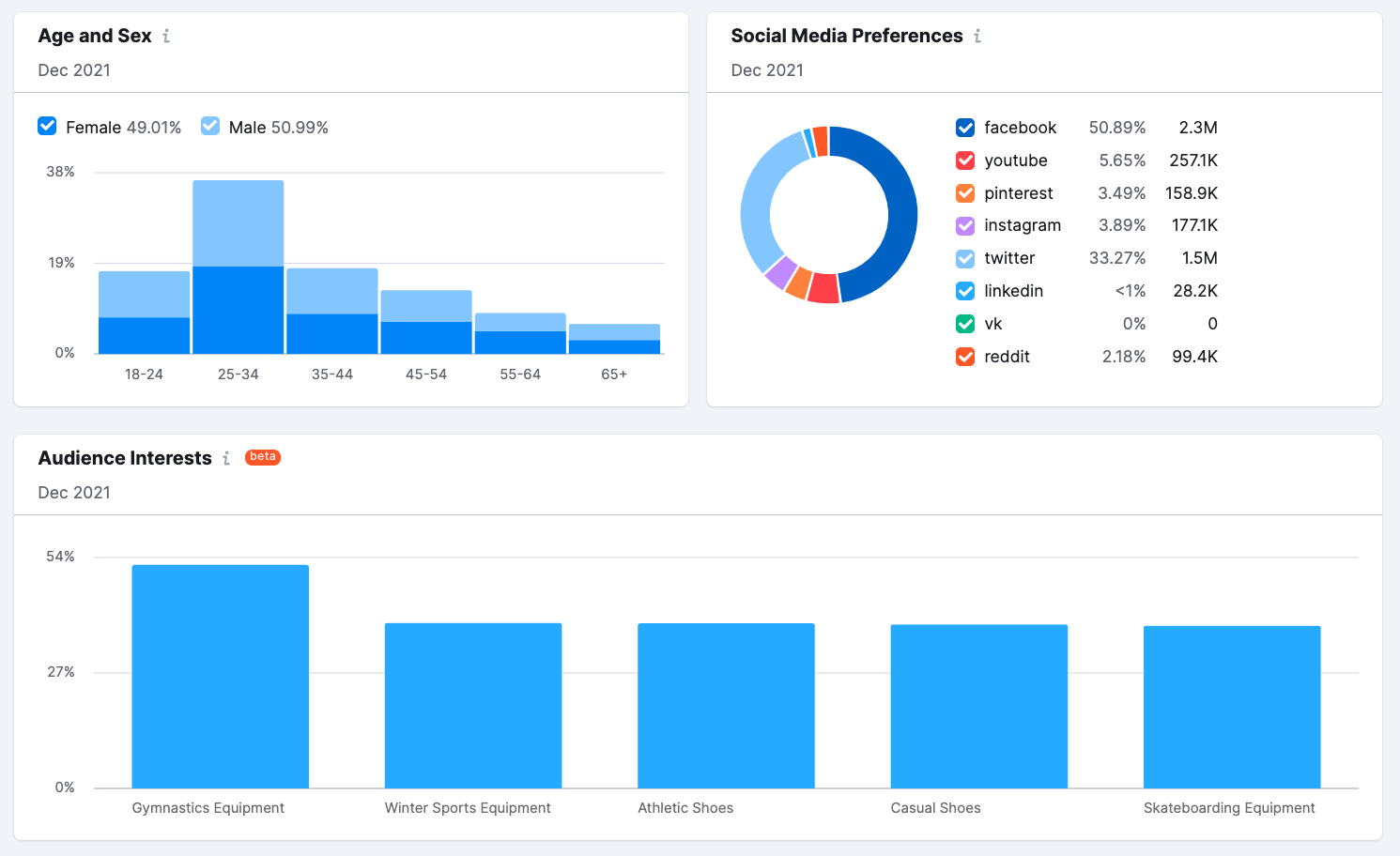
Topics that interest your audience are also much more than just website categories. These topics are related to your perfect customer’s lifestyle and personality and reveal the potential for future expansion.
Estimate the Potential of the Location
Targeting a new location may turn out to be risky due to seasonal demand and supply fluctuations and cultural specifics, among other reasons. Compare the demand peaks that tend to happen in November–December in Western ecommerces to the more stable dynamics of Eastern traffic in the same period. The reason is simple: different holiday calendars mean different seasons when consumers are most active. And this is just one example.
To be on the safe side, you can follow two scenarios. First, get to know the regions where your competitors are present, and especially those where they perform best; this will help you make a shortlist of geographical markets for your business expansion. Check the Geo Distribution report in Traffic Analytics for different key industry players’ domains and see what location promises the most customers.
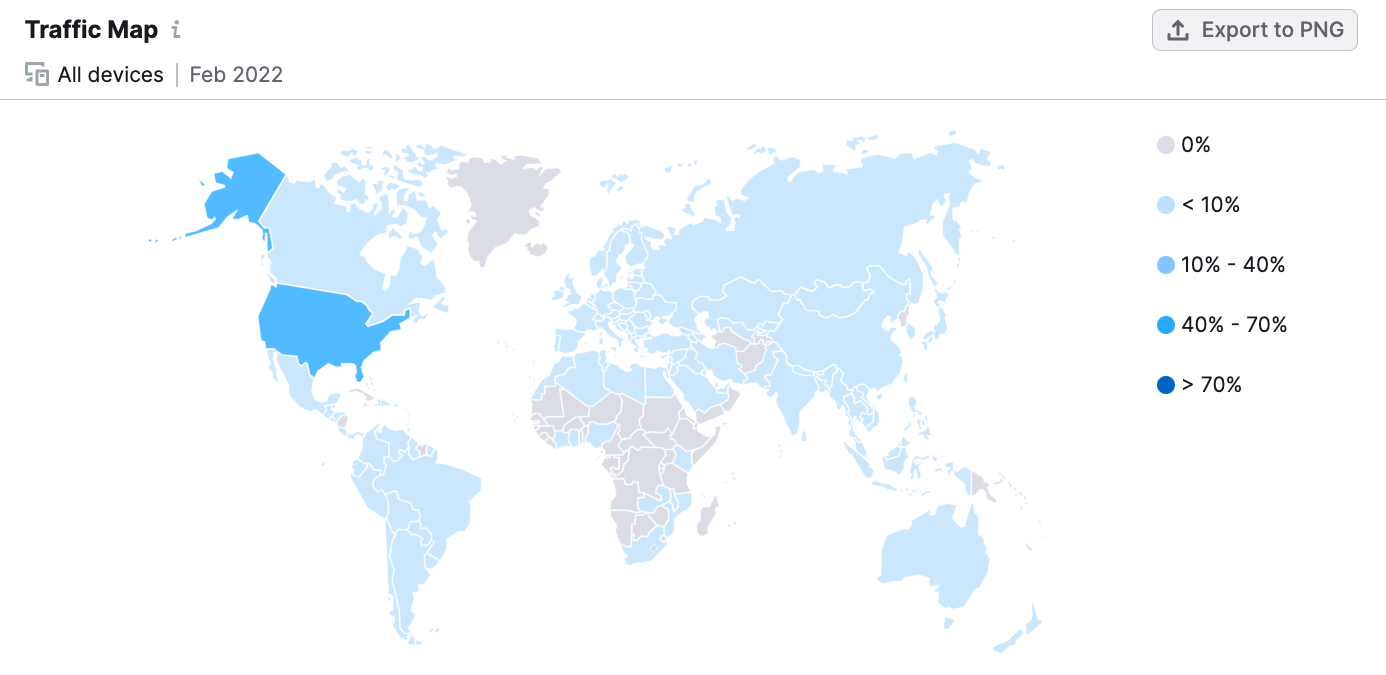
Second, if you already have a particular country in mind, you can go straight to analyzing the market there. Filter the Market Explorer reports by region to get a versatile overview of the competition and consumption in particular areas.
All this data can help you split the market into specific consumer segments for more focused analysis and detailed elaboration of your strategies.
Understand the Audience Behavior
It is not enough to know how much of the audience is potentially interested in a product/service like yours; it is far more insightful to know what websites they visit and how they switch from one platform to another. Luckily, there are ways to find this out.
Take the top player in the target market and research its audience overlap with other competitors in the Semrush Traffic Analytics tool. You will get to see how many of the unique visitors consider offers from other companies. If you are checking the potential of media placements, this feature will help you compare a company’s audience with publications’ readership too.
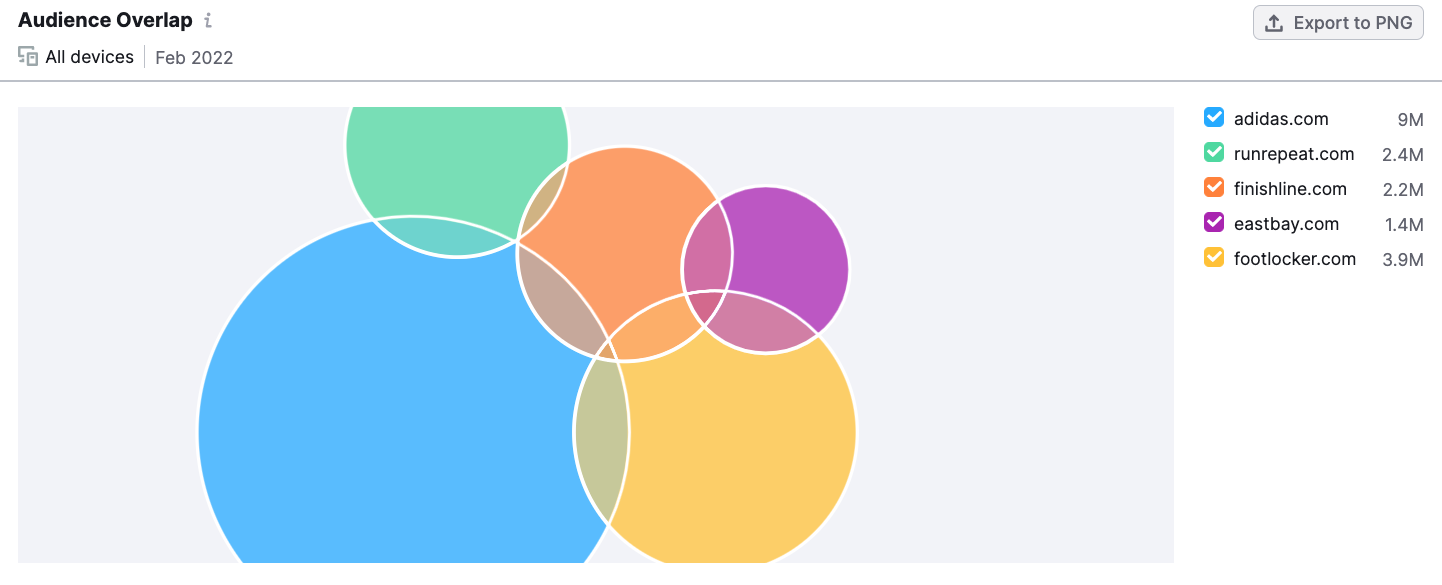
Need more insights about user behavior? We’ve got a complete guide on what audience overlap can reveal.
Step 3. In-Depth Competitor Analysis
The more details you learn about your competitors’ product marketing, the easier it will be to gain an advantage. Start by analyzing your direct competition, then switch to those who offer alternative solutions. Proceed from the consumer’s problem your product/service helps to fix; your closest rivals may belong to a different category and offer something less innovative, but engage well with the audience and pose a real threat in marketing.
We suggest you do two main jobs in this step.
Carry Out the Product Research
Answer the main “why” questions behind the product:
- Why do people need it in general?
- Why do people buy it from this particular company? (The answer may be anything from the price to the design)
- Why do you believe you can compete with them?
One way to get into the head of a competitor’s customer is to become their customer yourself. At least for a trial period. This way, you will get the most practical insights:
- What features their product/service includes.
- How much it costs.
- How easy it is to go through the customer journey — from discovering the company to actually becoming a client.
- How easy it is to use the product/service.
- How easy it is to get support or contact the company at all.
- How they handle interaction with their clients — you may get subscribed to the company’s newsletter and get an inside look at their communication style.
- How well they actually solve the problem.
- How they could improve (and if they show any potential to improve).
Finally, write down how you are better than them in each of these points — or just different; in some markets, tweaking your offering just a little bit is enough to succeed.
Analyze Their Marketing Strategies
Now, it is time to discover how the key competitors managed to broadcast their product values and brand ideas and win the audience.
With Semrush Traffic Analytics, you can build a simple competitive matrix of up to 5 units. Pick 5 domains and have them compared by traffic, traffic sources and distribution, and user behavior metrics.

Use this data to find the most effective marketing ploys to make prospective customers buy from you, not them.
Hint: look at the Destination Sites where users went after visiting your competitors’ domains. You have a high chance of hooking the right audience on these platforms.
The last but not least step will be to uncover the best promotional channels to attract the ready-to-buy audience. Do you still have your key industry players list built with Market Explorer? Look at the traffic sources of leading businesses to see if you have chosen the same promo strategy.
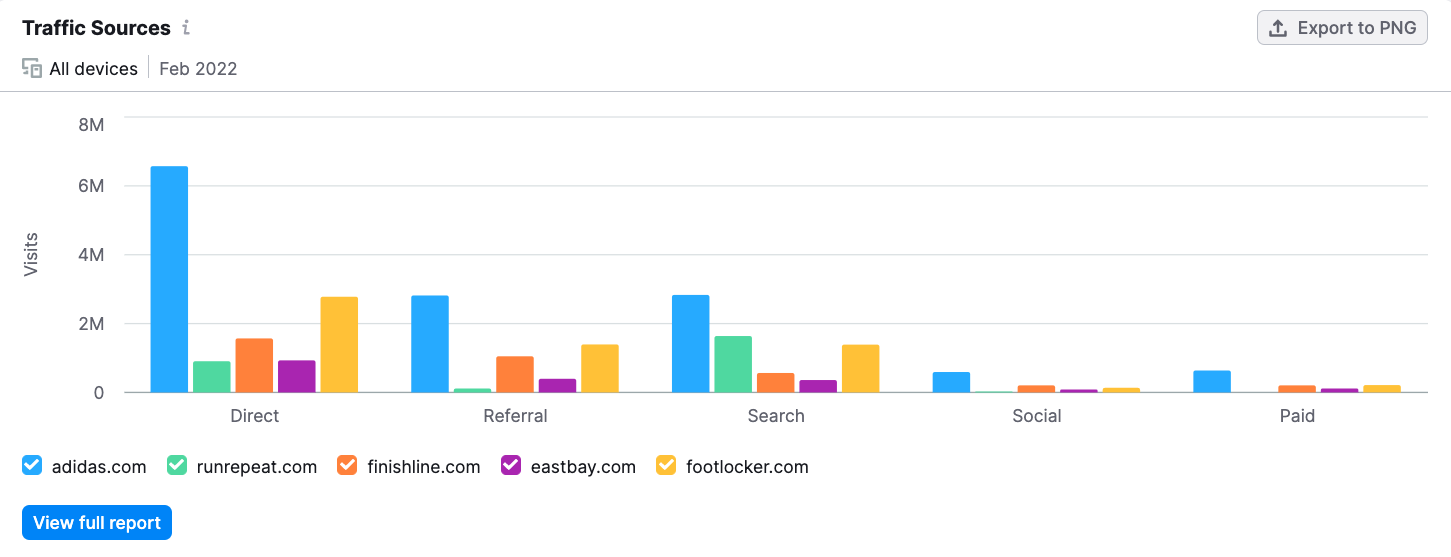
Concluding Remarks and Last-Minute Advice
This market analysis guide is designed to answer any business needs. However, you can follow its steps as separate instructions at different stages of your research or add more Semrush tools from the Competitive Research Solution at each step to customize the guide for your own needs. A larger dataset will never hurt — remember that competitive intelligence is to inform, not to determine your roadmap.
